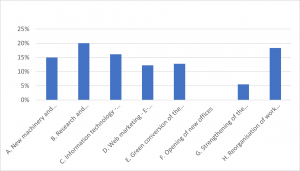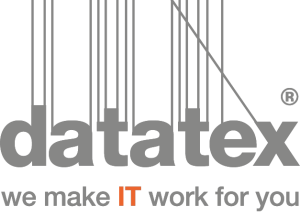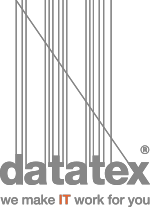Com este inquérito, a Datatex quis envolver gestores e empresários têxteis de todo o mundo, para melhor compreender os objectivos futuros, as intenções, as esperanças e os sentimentos dos intervenientes no sector.
O inquérito, traduzido em várias línguas, foi enviado a empresários e gestores das mais importantes empresas têxteis do mundo e obteve mais de 1.000 respostas, que permitiram obter uma imagem muito interessante da situação atual da indústria.
1) ECO-SUSTENTABILIDADE E INOVAÇÃO DE PRODUTOS
À pergunta, entre as mudanças que o sector têxtil está a atravessar, qual é a mais revolucionária, as respostas que obtiveram o maior número de votos foram
– Sustentabilidade – ecologia – economia verde (resposta escolhida por 24% dos inquiridos)
– Inovação de produtos, novas fibras, novos tecidos (resposta escolhida por 20 % dos inquiridos)
Considerando que, hoje em dia, no âmbito da inovação de produtos, a procura de novos fios e tecidos mais ecológicos desempenha um papel estratégico, os resultados confirmaram que o tema da eco-sustentabilidade e da redução do impacto ambiental é a palavra-chave no mundo têxtil e é um elemento fundamental para quem trabalha no sector.

2) ÁSIA e ÁFRICA
À pergunta em que área geográfica pensa que o sector têxtil irá crescer mais, as respostas mais bem sucedidas foram
– Ásia (45% dos inquiridos)
– África (26% dos entrevistados)
O negócio têxtil é feito principalmente na Ásia, e os operadores têxteis acreditam que esta tendência se manterá inalterada também a médio-longo prazo, enquanto África é vista como uma área de interesse crescente para possíveis investimentos têxteis, muito mais apelativa – de acordo com os entrevistados – do que a América do Sul (8%) e a América Central (3%), apesar do rápido crescimento da indústria têxtil nesta área durante os últimos anos. A América do Norte (escolhida por 7 % dos inquiridos) e a Europa (8%), apesar do elevado número de excelências qualitativas neste domínio, são, no entanto, consideradas zonas periféricas em termos de grandes valores e volumes têxteis.

3) TINGIMENTO E ACABAMENTO – IMPRESSÃO
À pergunta sobre qual dos sectores têxteis tem atualmente o maior potencial e se desenvolverá mais nos próximos anos, as respostas foram as seguintes
– Tingimento e acabamento (29 % dos inquiridos)
– Impressão (20% do entrevistado)
A crescente inovação tecnológica, na área da tinturaria, dos acabamentos (área onde hoje existe uma necessidade crescente de produtos eco-friendly), e da estamparia têxtil (área onde a componente digital é cada vez mais importante), leva-nos a crer que nesta matéria as novas oportunidades e mudanças serão fulcrais por muitos mais anos, com importantes ocasiões de negócio que as empresas têxteis terão de aproveitar.
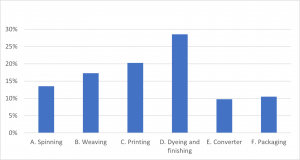
4) GESTÃO INFORMÁTICA NA EMPRESA TÊXTIL
É de salientar que, neste caso, as respostas são muito fragmentadas, sem uma hierarquia clara.
A área mais estratégica, do ponto de vista das TI, para gerir uma empresa têxtil, é o planeamento para 19% dos entrevistados, a gestão da cadeia de fornecimento para 17%, os custos para 17%, o acompanhamento para 16%, o comércio eletrónico e o marketing na Web para 14%, a integração na Web com clientes e fornecedores para 13%.
Esta variedade de respostas tem um significado claro para nós: do ponto de vista informático, não existe um domínio mais estratégico do que outros. Todas as áreas são importantes, todas as áreas têm de ser bem organizadas para que uma indústria têxtil funcione corretamente e cada empresa tem necessidades diferentes que surgem de tempos a tempos no diálogo constante com a software house de referência.
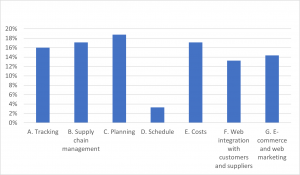
5) REDUÇÃO DE CUSTOS
À pergunta sobre qual, entre todas as rubricas de custos, é possível atuar hoje através de cortes, as respostas com maior número de votos são:
– Energia (17% dos inquiridos)
– Resíduos (17% dos inquiridos)
Ambas as respostas estão relacionadas com o tema central da eco-sustentabilidade e da economia verde. Investir na eficiência energética de uma empresa têxtil, na reciclagem e reutilização de resíduos têxteis, significa obter resultados positivos a médio prazo, tanto do ponto de vista da redução de custos como da proteção ambiental.

6) EM QUE INVESTIR NOS PRÓXIMOS DOIS ANOS?
À pergunta sobre qual, entre as diferentes áreas de investimento nos próximos dois anos, poderia ser a área em que se deveria investir mais, as respostas que obtiveram o maior número de votos foram
– Investigação e Desenvolvimento (20% dos entrevistados)
– Reorganização do trabalho e da empresa (18% dos entrevistados)
A importância estratégica da I&D e dos investimentos para a inovação de produtos já surgiu na primeira pergunta; é um tema importante e é uma questão fundamental para todas as empresas têxteis que querem ser competitivas neste contexto cada vez mais difícil e competitivo.
Mas hoje é também obrigatório reorganizar a empresa e o local de trabalho, num contexto em que a emergência da Covid está a criar problemas importantes para as transferências, impondo uma nova gestão dos espaços e dos escritórios, e está a obrigar todos a utilizar, pelo menos parcialmente, soluções de trabalho inteligentes. É a difícil situação ligada à pandemia a provocar – pelo menos por agora – um congelamento de todos os projectos relacionados com a “abertura de novas filiais”, resposta escolhida por 0% dos entrevistados.
É claro que estamos a falar das perspectivas de investimento a curto prazo (os próximos dois anos), enquanto o sector têxtil em todo o mundo aguarda um grande recomeço, assim que a emergência pandémica terminar.
